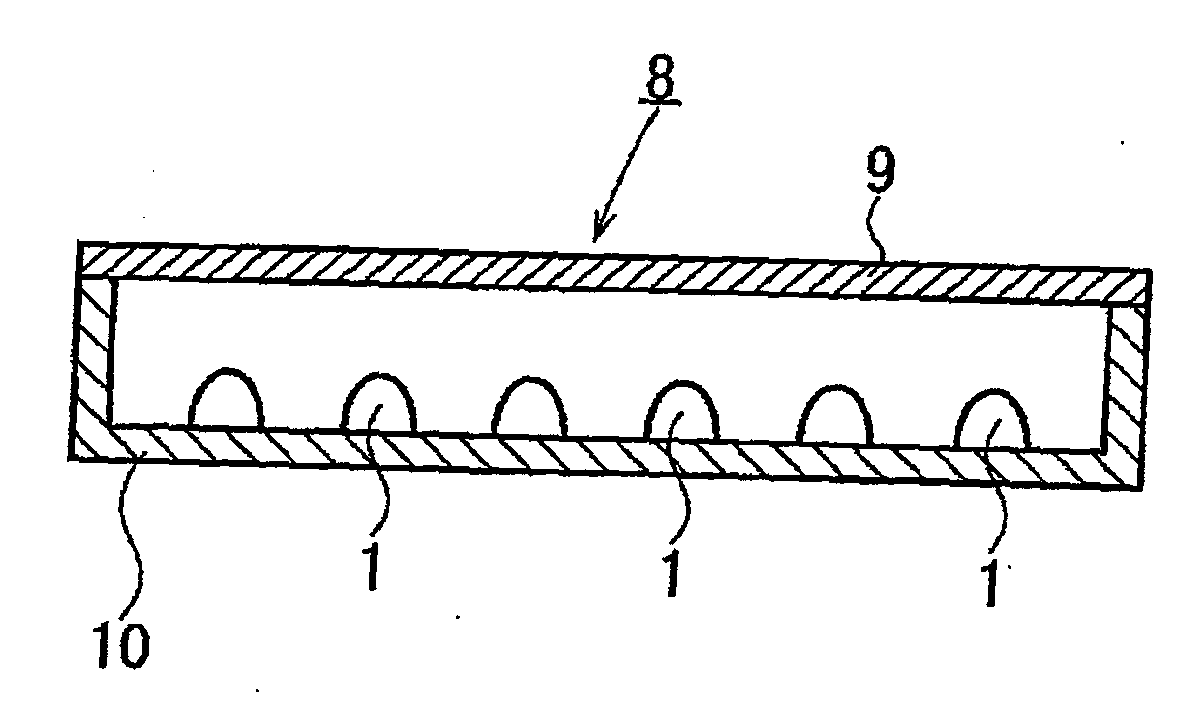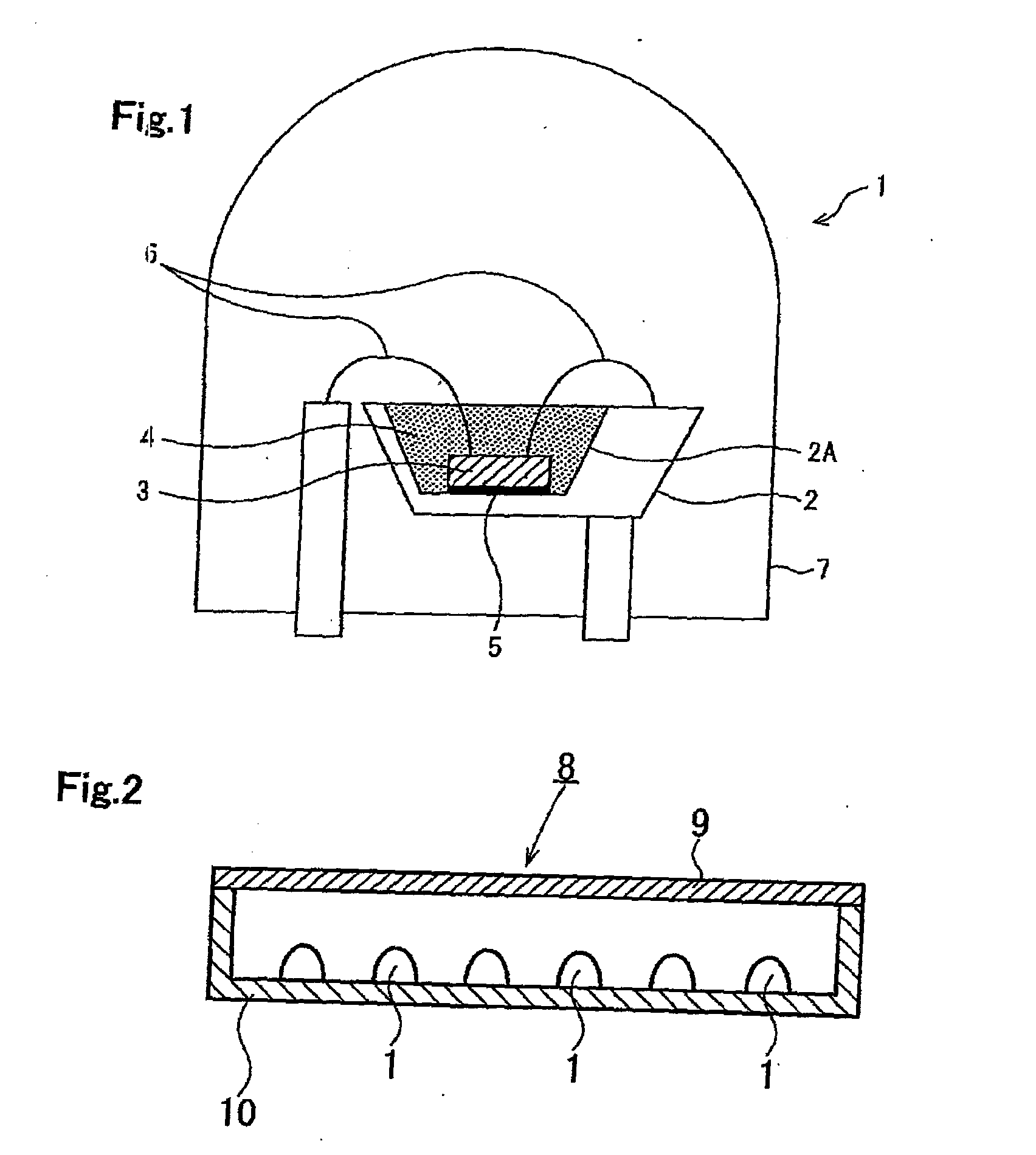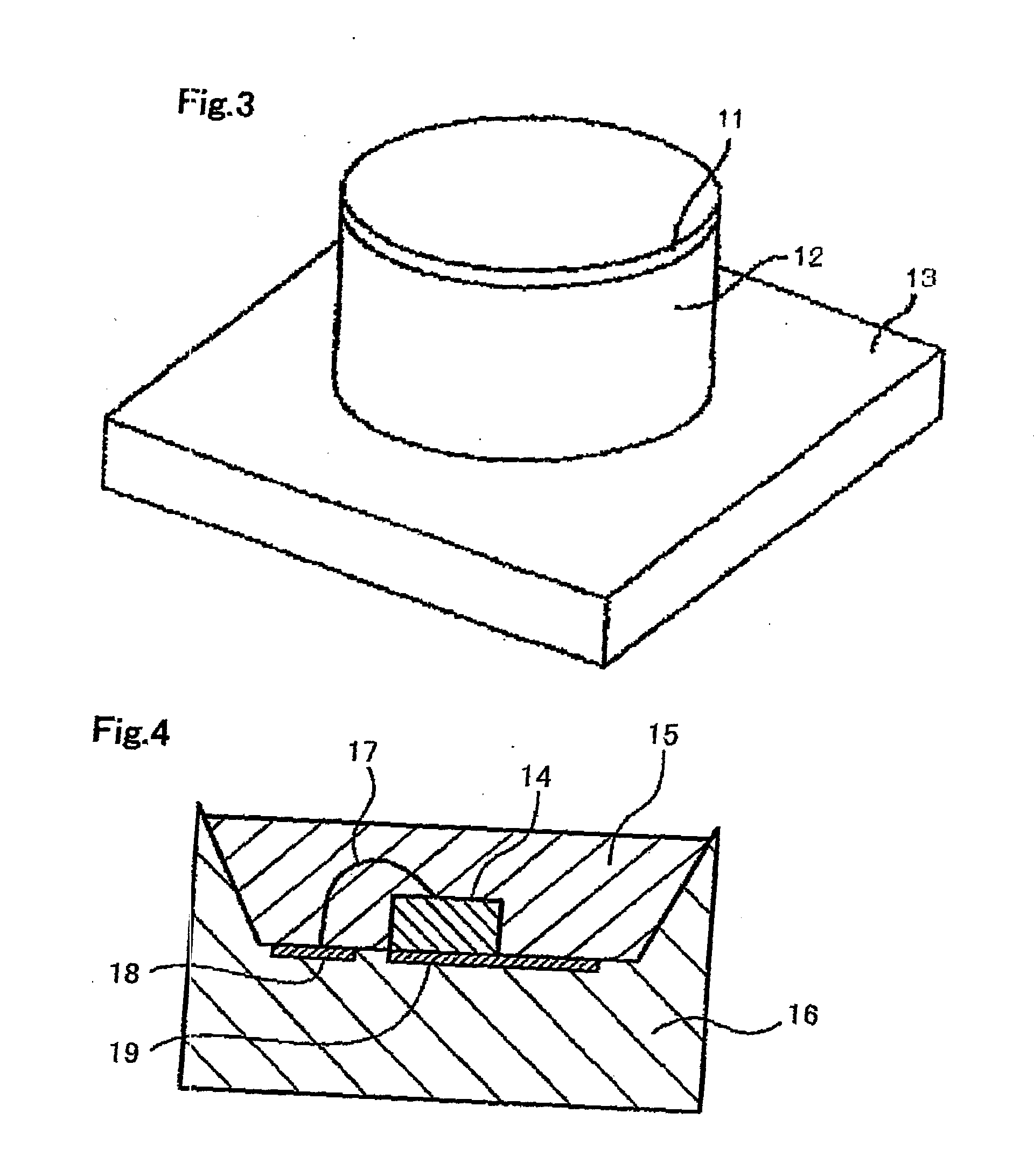Alloy powder for aw material of inorganic functional material and phosphor
a technology of inorganic functional materials and alloy powders, which is applied in the direction of solid-state devices, discharge tubes/lamp details, metal-working apparatuses, etc., can solve the problems of inability to obtain nitrides containing no oxygen, methods that are problematic in industrial large-scale synthesis, and the brightness of phosphors is decreased, so as to achieve efficient and uniform production
- Summary
- Abstract
- Description
- Claims
- Application Information
AI Technical Summary
Benefits of technology
Problems solved by technology
Method used
Image
Examples
example 1-1
Production of Mother Alloy
[0162]Source metals were weighed such that the ratio (molar ratio) of Al to Si was 1:1. The source metals were melted in an argon atmosphere using a graphite crucible and a high-frequency induction melting furnace. The molten metal mixture was poured into a mold and then solidified, whereby an alloy (a mother alloy) with an Al-to-Si ratio of 1:1 was obtained.
(Production of Phosphor Precursor)
[0163]The mother alloy and other source metals were weighed such that the ratio (molar ratio) of Eu to Sr to Ca to Al to Si was 0.008:0.792:0.2:1:1. After the furnace was evacuated to 5×10−2 Pa, the evacuation of the furnace was stopped and argon was then introduced into the furnace until the pressure in the furnace reached a predetermined value. The mother alloy and Sr were melted in a calcia crucible in that order. Eu and Ca were added to the molten metals. After all these components were fused into a molten alloy and the molten alloy was observed to be agitated by an...
reference example 1-1
[0168]Into a boron nitride crucible (an inner diameter of 55 mm), 10 g of the alloy powder prepared in Example 1-1 was placed. The boron nitride crucible was set in a hot isostatic press (HIP). The press was evacuated to 5×10−1 Pa, heated to 300° C., and then further evacuated at 300° C. for one hour. Nitrogen was introduced into the press such that the pressure in the press was increased to 1 MPa. After the press was cooled, the pressure in the press was reduced to 0.1 MPa. Nitrogen was introduced into the press again such that the pressure in the press was increased to 1 MPa. This procedure was repeated twice. Before the press was heated, nitrogen was introduced into the press such that the pressure in the press was increased to 50 MPa. The sample was heated to 1900° C. at a heating rate of about 600° C. / hr. The pressure in the press was increased to 135 MPa at a rate of about 50 MPa / hr by the heating process. The pressure in the press was increased to 190 MPa. The sample was main...
example 1-2
[0170]An alloy powder was prepared in substantially the same manner as that described in Example 1-1 except that an alumina mortar was used and the milling time was five minutes. The particle size distribution and element analysis results of the alloy powder were shown in Table 1. The alloy powder was nitridated in the same manner as that described in Reference Example 1-1, whereby a phosphor was obtained. Luminescent properties of the phosphor were measured. The measurement results were shown in Table 1.
PUM
| Property | Measurement | Unit |
|---|---|---|
| 2θ | aaaaa | aaaaa |
| 2θ | aaaaa | aaaaa |
| 2θ | aaaaa | aaaaa |
Abstract
Description
Claims
Application Information
 Login to View More
Login to View More - R&D
- Intellectual Property
- Life Sciences
- Materials
- Tech Scout
- Unparalleled Data Quality
- Higher Quality Content
- 60% Fewer Hallucinations
Browse by: Latest US Patents, China's latest patents, Technical Efficacy Thesaurus, Application Domain, Technology Topic, Popular Technical Reports.
© 2025 PatSnap. All rights reserved.Legal|Privacy policy|Modern Slavery Act Transparency Statement|Sitemap|About US| Contact US: help@patsnap.com



